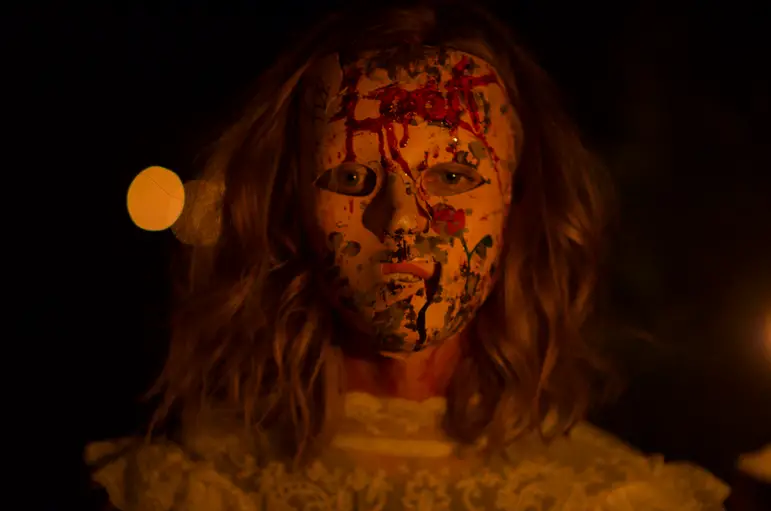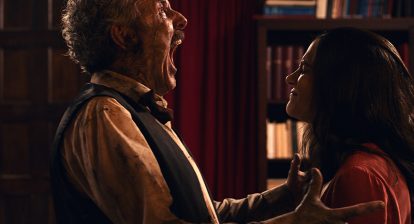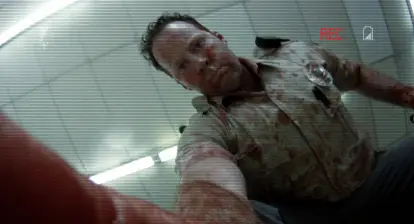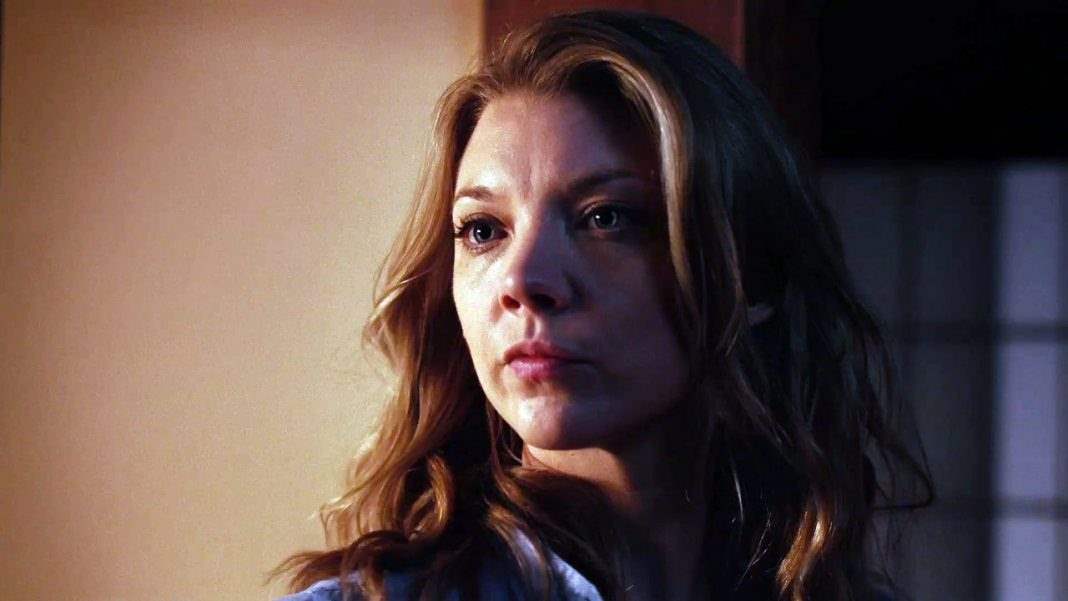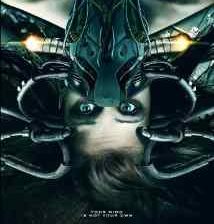The wait is finally over for Sonny Mallhi’s slasher film, Hurt. Originally premiering at Fantasia Fest in 2018, the film is now available in select theaters and VOD/digital platforms thanks to Gravitas Ventures. In the film…“A soldier reunites with his wife to take in the attractions at their favorite Halloween spot: the ‘Haunted Hayride.’ But when real terror follows them home, they must fight for their lives… or become the next attraction.” One of the aspects that adds to the atmosphere of the film is cinematography by Jorel O’Dell. Jorel uses darkness, shadows and framing to create a highly effective atmosphere. The end result being a fun, yet terrifying ride. We spoke exclusively with Jorel more about his work on Hurt. Read the full interview below.
Wicked Horror: How did you first get involved with Hurt?
Jorel O’Dell: I got a call out of the blue from Sonny Mallhi. I had just finished shooting a feature here in LA just days before, and I had no work lined up at all. It was a very welcome opportunity to fly off to Ottawa and DP a feature. Sonny sent me the script, I liked it quite a lot, and maybe less than a week later I was in Ottawa getting started on prep.
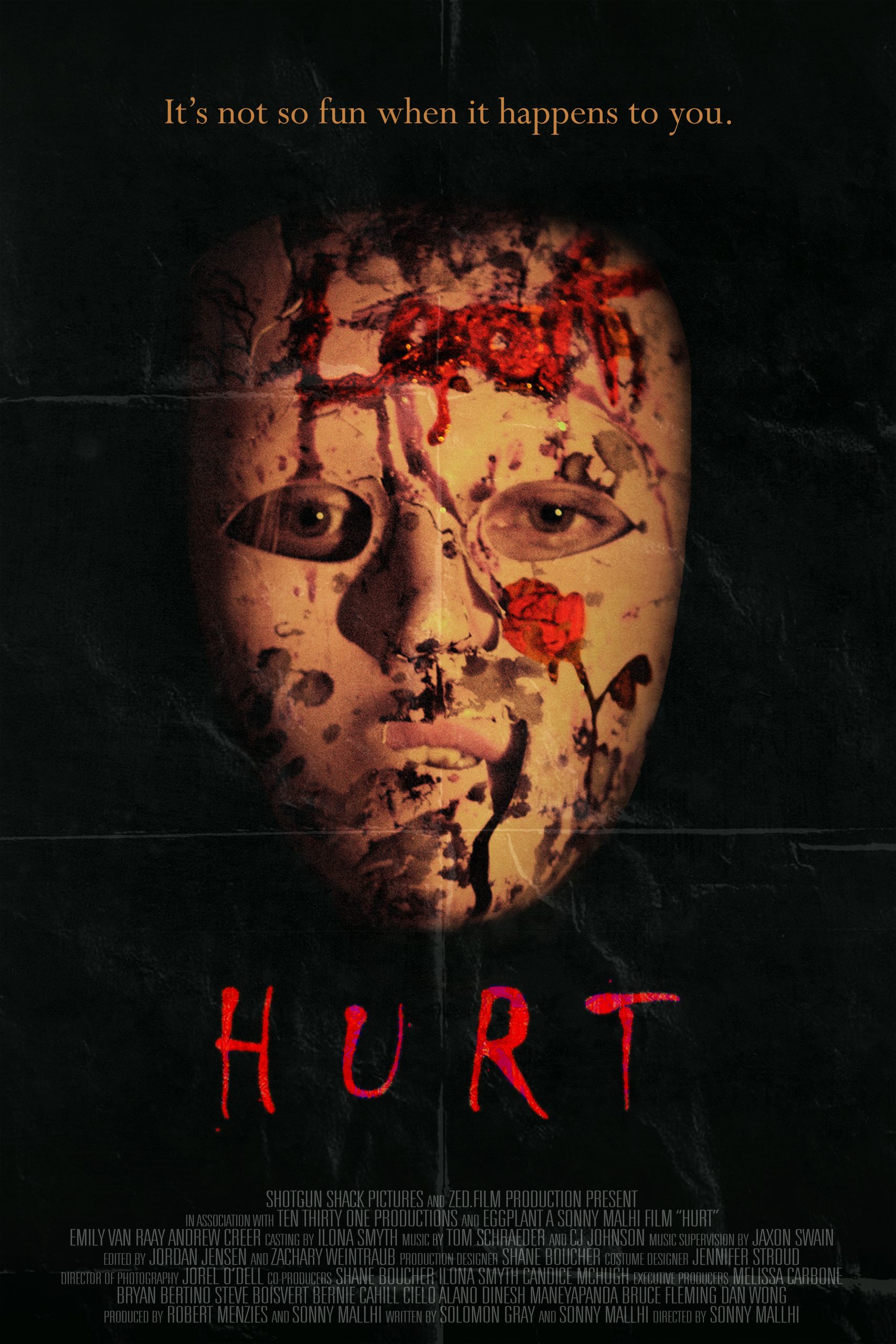
Wicked Horror: What did pre-production on Hurt look like for you?
Jorel O’Dell: It was unconventional in a lot of ways. We didn’t go over the script at all really. It was just scouting locations over broad stretches of land up there, so it took a great deal of our time. I was quickly faced with certain limitations regarding gear and crew. We did the absolute best we could with what we had, and essentially, I ended up with a very modest little lighting package and only one grip and one electrician. On 3 or 4 shooting days out of the month I was able to have one extra grip hand. And due to rates being low, my electrician was actually two different people who traded on and off depending on their availability. It was as Sonny mentioned in a few interviews, “a college style production”. Which it absolutely was in regard to number of hands and available gear, but it wasn’t in regard to the experience and talent of the few people we DID have. My 1stAC and 2ndAC also kicked butt and totally had my back. It was very lucky to have that kind of support as I was often spread thin; off lighting with the G&E guys and also working within each scene, trying to block, and find the magic with Sonny, and operate the camera the entire time. I carried a great deal on the production of this film, and I feel that it translates somehow into the film. There is a beauty and a struggle in what we accomplished. I am so proud of the entire team. I’m amazed actually.
Wicked Horror: Can you talk about working with director Sonny Mallhi. What did you learn from him working on this film?
Jorel O’Dell: Sure! He’s a mad man!!! hahahahahah! I mean, there is nothing that man is feeling that we didn’t know about. So that was great to kind of always know how we were doing. I’m sure he was under unreal stresses as he was making this all happen with so very little and with the help of just a couple people, like the amazing Rob Menzies, and Steve Boisvart. Sonny was making the best film he could possibly make under those circumstances.
So sometimes structurally it was almost absolute free jazz! We had done a lot of planning as to the shooting schedule, moving company, and overnights etc. but things happen and a lot just went out the window due to forces unforeseeable. Some aspects of the film were completely found in these moments, because we had to wait a few hours to keep shooting due to this-or-that and I would just go out and shoot all around the location. I got many beautiful time-lapses and textural elements of the farm or landscape, and it just about all ended up in the final cut, and worked so well. So those are just gifts!
There were some immense challenges too. One I remember was matching 3 different locations for Rose and Tommy’s house. There was one loc for the front yard (that we weren’t allowed to go inside of), another location for the entire Interior of their house, and a third location for the massive backyard with the large barn, and field etc. The shooting continuity for me with time-of-day matching light, going from afternoon, into sunset, into night, then sunrise, back to morning over weeks apart in three different geographical locations was at that time one of the greatest technical challenges of my career, especially having limited gear/crew.
I digress. I think what I liked the most about working with Sonny was his fearlessness. He always wanted me to find the way that something had never been shot before. I’m not so sure I achieved that necessarily. But he certainly stretched my comfort zone in many instances. His love for extreme extreme close ups, and odd framing and his unrelenting assurance that that was exactly what he wanted really pushed me. I grew a lot from that kind of fearlessness. It really showed me how important story is over image, or at least the image in our minds. Don’t get me wrong I am very happy with the images we captured here. Because I’ve seen the final edit, and I just absolutely love it. Everything works for me. And I’m a very stern critic. But his direction to go extreme in certain moments really service the film beautifully, and terrifyingly so.
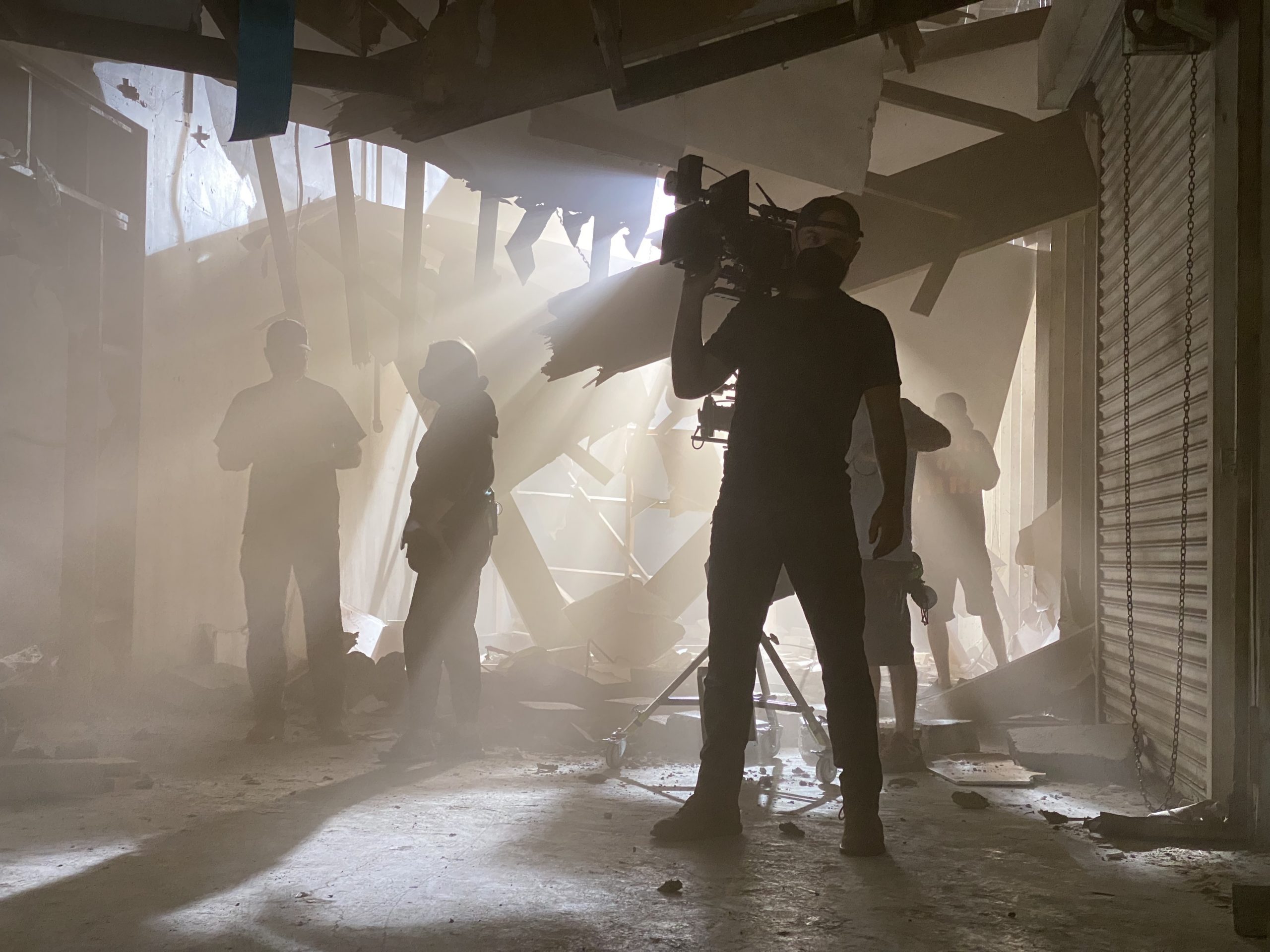
Cinematographer Jorel O’Dell
Wicked Horror: What was the most complicated scene in the film to shoot? Why?
Jorel O’Dell: HAHA! Every scene. This is really hard to answer. With so few people, everything becomes rather complicated in a way I suppose. Many of the night exterior setups were complicated. Finding light absolutely anywhere we could. I raided entire storage rooms filled with lights at each of the Hayrides we got to shoot at. I used what they had onsite to help supplement what little I had on the truck.
After our first week of scouting, I asked for a couple hundred dollars out of the budget to go buy flood lights from Home Depot. We made it work. On the truck I had two 9 light fays, two M18’s, and a couple of 650’s. Getting these lights placed from set-up to set-up took time and it was a great balancing act of time management, foresight, dealing with improvised shots, moving entire trucks that had been emptied in the front yard and hiding all the gear because a new angle had to be found due to some other conflicting issue.
There were days all of the crew didn’t think we were going to have a film after this. The most complicated scene in this film were all the moments in between shooting, HAHAHAHAH!
All more the reason it’s so so sweet to be here now with what I feel is an outstanding independent horror feature. I’m really proud of Sonny especially.

Wicked Horror: A lot of shots in Hurt are framed very specifically through doorways, mask eyes or other objects. Why did you do this?
Jorel O’ Dell: Oh yeah!!! This just happens to be very much my jam, ya know? So it wasn’t a stretch when Sonny was asking for this specifically. I love architectural inclusion. And I found new ways in this film right there in the moment with Sonny. Sometimes it was the darkness surrounding a light source that gave us new framing within the frame. That might sound a bit vague. But like these for example.
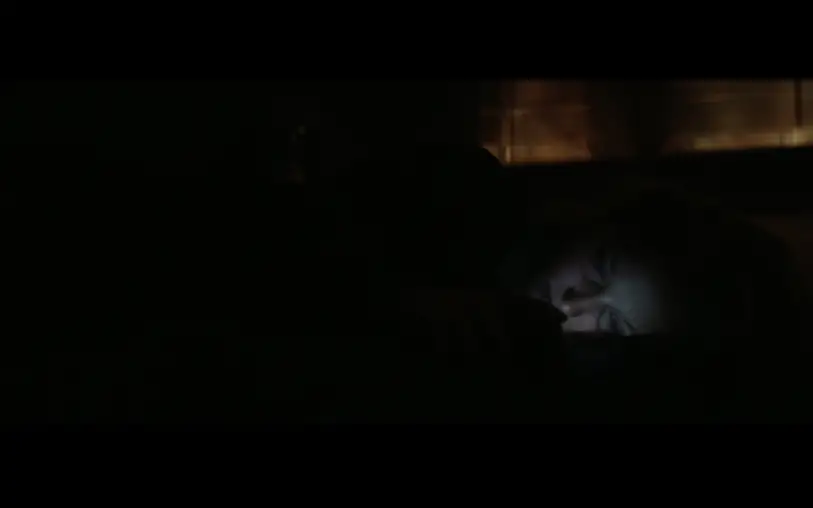
These are just incredible to me. She’s framed just barely by her bedroom window in full silhouette, then after illuminated only by her cell phone. That window frame becomes the frame within the frame. And Rose is made soooooo small in this instance, which is just absolutely perfect. Because I know those moments when the world is crashing down around you and everything is at stake and at once changing your life so completely and you don’t want to acknowledge it. This is just right in every single way for her experience and this crucial turning point in the story.
Wicked Horror: We heard you lit this film entirely with one electrician and one key grip. How many electricians and key grips are normally on a film like this?
Jorel O’Dell: Unusually there are at the very least a Gaffer + Electrician, and Key Grip + a Grip. This is called a 2+2 G&E crew. In most independent films a 3+3 isn’t unheard of for run of show. We just weren’t that. I’m not sure anyone has made a film this strong with so very little. And I lit every single frame of this film with the exception of the few Day Ext. shots. We were not relying on some insane light sensitivity like 2500 or higher that you see a lot these days.
I shot this predominantly at 1280 on my Alexa Mini, and I never really love shooting anything higher than 800 – 1000. Maybe 5 shots I had to go to 1600. And I was shooting on an Ultra Scope Anamorphic 40mm T.2 for the entire film outside of the Close Up shots (which there are few). My UltraScope was pretty fast so you really get a sense for how little lighting gear, or little time I had to work with. But yet, all in all, I believe made the film stronger. I was concerned at first, but now I absolutely love it.
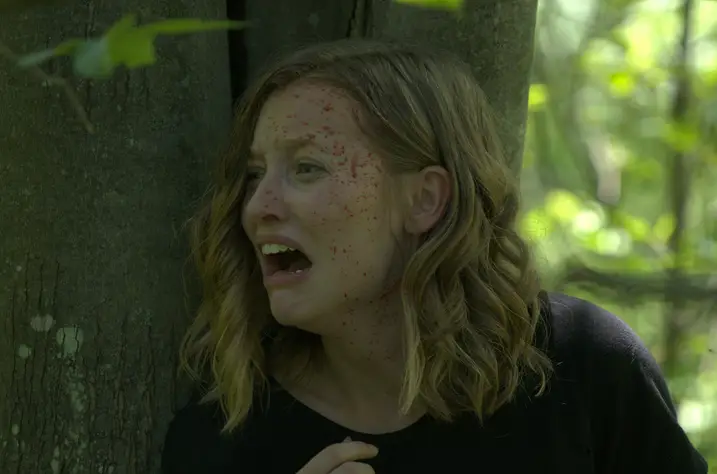
Wicked Horror: Because of the limited crew, did that change your approach to lighting setups, etc?
Jorel O’Dell: Yes, exactly. The limits of crew and time gave us what you see in the film. Simple as that. However, many times I see certain frames where I think instinctually that I could have used any small source for some edge, or ambiance, I’m overcome with joy seeing the cut, understanding that it wouldn’t have necessarily helped the story. The story is there and it’s strong. Again, that’s a huge testament to Sonny and his vision, as well as his ability to embrace those moments. I remember clearly many moments on set where I was waiting for that one more light to make it up from the truck and Sonny would say, “no way, this is perfect”. And he was right.
Wicked Horror: Do you feel that the horror genre has its own set of rules when it comes to shadows and darkness?
Jorel O’ Dell: Well, if we’re an example of anything, I’d say you can see there aren’t any real rules to shadows and darkness. They are the most effective tool in making space for doubt and fear so I believe darkness is crucial in a lot of ways for this genre, but certainly in all genres as well. Funny fact. This film was actually shot about a stop brighter. I was surprised to see just how much they brought it down in the grade. It certainly wouldn’t have been my first instinct in the color bay, but it ended up working beautifully and Sonny’s vision feels perfectly aligned.
And now that I think about it, I’m seeing so much more these days in modern popular Horror films. I like that about HURT. We really brought back that feeling of the classic Horror Slasher. Sonny and I had detailed discussions about that during prep, so I knew thats what we were going for. I actually brought one .9 SE grad with me and had it live on the 40mm for most of the film. It helped a great deal, as we could really see and feel the richness closing in around Rose at the monitor.
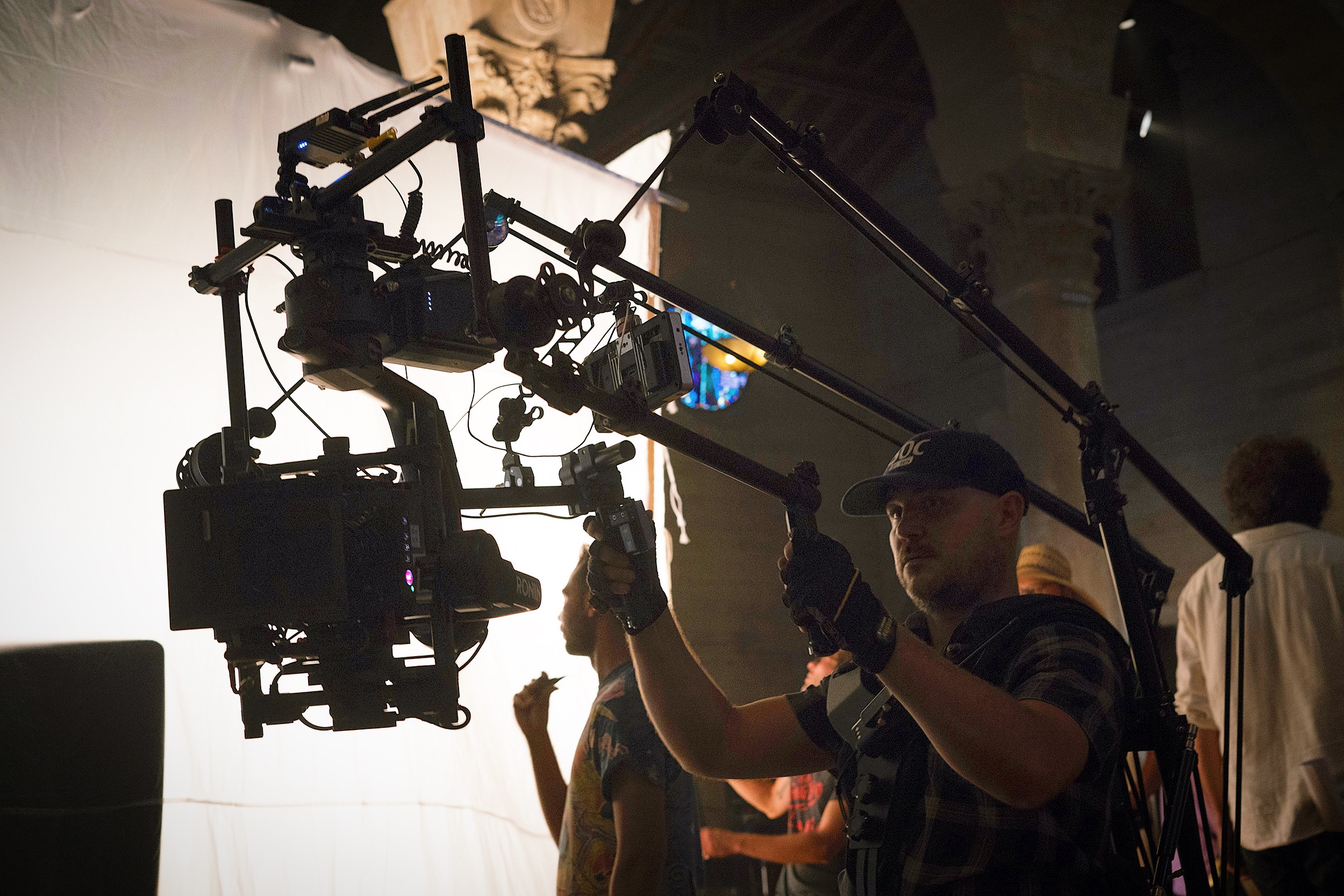
Jorel O’Dell
Wicked Horror: Is there a horror film that you have recently seen, where the cinematography really stuck out to you?
Jorel O’Dell: Yes, the “VVitch” by Robert Eggers; Cinematography by Jarin Blaschke. I am enraptured by this remarkable film. In many ways the cinematography may feel on the less flashy side, but I know what goes into making something like this, and its not easy. This film is a masterpiece in my eyes.
On the slightly more commercial side I was very much moved by the work of Pawel Pogorzelski in “Hereditary”.
On the very commercial end of the genre: “The Conjuring: The Devil Made Me Do It” was rather impressive.
